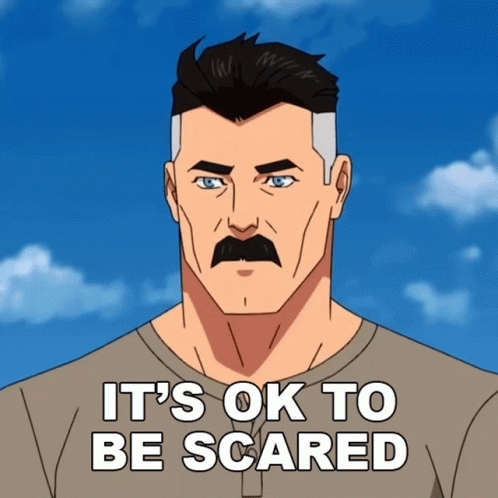...See more
It might be at your local bodega, enhancing coffee or seltzer. You might find it online as a capsule, suppository, or cream. Its available by prescription, too, as a drug to treat epileptic seizures in children. Its billed as everything from a pain reliever to a cancer cure.
The holder of this impressive résumé? Cannibidiol, or CBD, one of the many compounds known as cannabinoids that are found in marijuana and its sister plant, hemp. For years, CBD lived in the shadow of its intoxicating cousin, tetrahydrocannabinol (THC), the cannabinoid thats responsible for marijuanas high and on which the bulk of research has focused.
CBD does not produce a high, but has recently overtaken THC as the cannabinoid du jour. Deemed safe by most experts, it is said to induce calm, boost mood, and relieve pain without the impairment or anxiety that THC can induce. But though CBD is showing real promise for treating conditions such as anxiety and addiction, researchers worry that false claims are flourishing—and far outstripping the ability of science to catch up.
The Cannabinoids Within
As a plant-derived compound, CBD is known as a phytocannabinoid. But plants dont hold a monopoly on the molecules. Animals—including humans—produce cannabinoids, called endocannabinoids, which work as neurotransmitters in a network of receptors scattered throughout the central and peripheral nervous systems. The endocannabinoid system, or ECS, has a hand in a dizzying array of physiological and psychological processes, from reproduction to memory.
Increased knowledge of the ECS has changed the understanding of neurotransmission. One of two known endocannabinoids, 2-arachidonoylglycerol (2-AG), is unusual among neurotransmitters in that it originates on the post-synaptic side of neural pathways. When a neuron is overstimulated, 2-AG travels backward across the synapse and—in a process known as retrograde inhibition—stops the pre-synapse from additional action. It controls how neurons fire and if they can fire repeatedly, explains pharmacologist Aidan Hampson of the National Institute on Drug Abuse-the importance of which, he argues, cant be overstated. Firing too quickly can trigger neuronal death. Also, 2-AG inhibits inhibitory neurotransmitters, a double negative that encourages excitation of neural pathways. A pathway that doesnt get excited regularly weakens, Hampson explains, so 2-AG helps neurotransmitter systems—including those that control mood and memory—maintain homeostasis.
Fellow endocannabinoid anandamide doesnt appear to embark on the same reverse synaptic journey. Its range of effects is a bit unclear, although in animal studies it has modulated memory, stress, and anxiety.
Chill Out
Enter CBD. Its theorized that when its ingested—usually as droplets or capsules of oil extracted from cannabis or hemp—it interacts with the ECS in ways that promote mental health. One area where its shown tangible promise is in relief of anxiety disorders, including social anxiety and PTSD.
In one study, participants with social anxiety ingested a capsule of CBD before a public speaking task; compared to a placebo, the drug significantly reduced levels of stress in another, volunteers took CBD after THC; CBD mitigated THCs anxiety-inducing effects. In a trial published this year, daily CBD doses given to 47 adults with anxiety for up to three months rapidly decreased symptoms—with effects staying steady the entirety of the treatment period.
[Researchers] are really seeing reductions in anxiety only in folks with anxiety pathology, says Mallory Loffin, a psychologist at the University of California, San Diego, who is currently running a long-term clinical trial of CBD as a treatment for PTSD. That suggests youre actually getting a change in the pathological process—not just an overall dampening of the central nervous system, like what youd see with a benzodiazepine."
How CBD reduces anxiety isnt clear. We know it [increases] 2-AG, but were not quite sure how, Loflin says. It also may inhibit production of fatty acid amide hydrolase (FAAH), an enzyme that breaks down anandamide, and it could activate the serotonin receptor 5-HT1A—either of which could lower anxiety by boosting anandamide or serotonin in the brain. Theres not a clear-cut single mechanism, she says. It has diffuse effects on several pathways that were still trying to figure out. In PTSD, CBDs inhibition of FAAH may increase extinction learning, or how quickly a person stops associating environmental cues with a trauma response.
Treatment for Addiction
Just as THC can raise anxiety, it can induce drug-seeking behavior, research has shown. As the opioid epidemic worsened, psychiatrist Yasmin Hurd at the Mt. Sinai Icahn School of Medicine in New York wondered whether CBD might dampen those same behaviors.
Individuals with heroin use disorder who took a daily CBD solution for three days saw significantly reduced anxiety, as well as lower levels of the stress hormone [https://www.psychologytoday.com/us/basics/hormones] cortisol, in a clinical trial [https://www.ncbi.nlm.nih.gov/pubmed/31109198] Hurd published in May. More critically, CBD lessened drug craving, a key contributor to prolonged use.
Addiction is really a disorder of craving, Hurd says. People who develop drug addiction are sensitive to environmental cues—such as seeing an object associated with drug use—and to stress, which impacts cognition [https://www.psychologytoday.com/us/basics/cognition] and decision-making [https://www.psychologytoday.com/us/basics/decision-making], triggering relapse [https://www.psychologytoday.com/us/basics/relapse] even after withdrawal has faded.
CBDs dampening effect on cravings—an effect that endured for a week after the last dose—represents a breakthrough, Hurd says. Other opioid treatments, like naloxone or methadone [https://www.psychologytoday.com/us/conditions/opioids], block opioid reward or serve as safer substitutions. But they dont target cravings or anxiety, which often rise and fall in tandem. Cravings are one of the most critical parts of the addiction cycle, she says. If we can treat them, we have a much better shot that people will reduce their drug use.
CBD also provides some hope for schizophrenia [https://www.psychologytoday.com/us/conditions/schizophrenia]. When administered to patients along with a traditional antipsychotic, CBD significantly reduced the severity of hallucinations [https://www.psychologytoday.com/us/conditions/hallucinogen-persisting-perception-disorder] and delusions compared to the antipsychotic alone, as well as slightly improving scores on cognitive tests, in a small trial published last year. [https://www.ncbi.nlm.nih.gov/pubmed/29241357] Unlike other antipsychotics [https://www.psychologytoday.com/us/basics/psychopharmacology], CBD does not appear to antagonize dopamine [https://www.psychologytoday.com/us/basics/dopamine] receptors—possibly unlocking a new mechanism for treating psychosis [https://www.psychologytoday.com/us/basics/psychosis].
Dosing - An Open Question
With approximately 20 percent of U.S. adults affected by anxiety and nearly 50,000 deaths from opioid overdose each year, CBD looks to some like a general-purpose wonder drug—one that can be shipped to you in a few clicks. But theres a catch, experts say.
Most of the clinical trials that begat results did so courtesy of daily doses that ranged from 400 mg to more than 1,000. Thats exponentially more than youre going to find in commercial CBD extract, Loflin says. Commercial capsules tend to hover between 10 and 25 mg each. Lower doses than those tested may well be highly effective—but thats yet to be determined. Dosing has not been established for any indications except for epilepsy, Hurd says.
That hasnt slowed the market. Consumers shelled out an estimated $500 million in 2018 for commercial CBD to manage anxiety, insomnia [https://www.psychologytoday.com/us/basics/insomnia], or chronic pain [https://www.psychologytoday.com/us/basics/chronic-pain]. By 2025, sales are projected to pass $23 billion. But commercial CBD is inconsistently regulated, Loflin warns. Potency, labeling accuracy, and safety vary widely.
Of 84 products Loflin tested for a 2017 study [https://www.ncbi.nlm.nih.gov/pmc/articles/PMC5818782/], about 70 percent contained either more or less CBD than claimed. Twenty percent contained THC—which can intoxicate or induce anxiety, particularly in kids, or set off drug tests. Some products have also been found to contain contaminants like pesticides; others have contained no CBD at all. It may pay to buy from more reputable retailers. [See Is CBD Legal? Its Complicated, below.]
Someone who buys CBD to treat anxiety or addiction may see results—perhaps via a placebo effect [https://www.psychologytoday.com/us/basics/placebo]—or they might not. When it doesnt work, they may say, ‘Its just snake oil, Hurd observes. Its a double-edged sword. One group thinks its a wonder drug without any proof; another thinks its snake oil—again, with limited information. CBD could also interact with other medications in potentially harmful ways.
[Some] companies are promising CBD for things they have never tested, Hurd warns, singling out vaginal suppositories touted to increase libido. When we put it in everything from sliced bread to water, it trivializes its potential benefits.
Still, she describes herself as cautiously optimistic [https://www.psychologytoday.com/us/basics/optimism] about CBDs future. Im cautious because Im a scientist—and at the end of the day, its the data that count. But what shes seen so far has given her hope that CBD could be a safe, effective option for many disorders, including addiction.
Is CBD Legal? Its Complicated
Whether from the marijuana plant or the closely-related hemp plant, all CBD is nonintoxicating and interacts with the body in the same way. Hemp-sourced CBD can be sold in certain stores and online. While cannabis is still highly controlled at the federal level, hemp was legalized nationwide in the 2018 Farm Bill.
In those states where marijuana is legal, either medically or for adult use, CBD products may be sold in regulated dispensaries. Those CBD products could be derived from cannabis plants, which are regulated under the applicable state marijuana program, or they could be derived from hemp plants, which are regulated under the Farm Bill. Some consumers may be unaware of the difference, but talking to their local dispensary about the source of their CBD is a wise first step.
Many larger retailers, including Curaleaf, a major U.S. retailer of cannabis and hemp, label the source (hemp or cannabis) of each CBD product. They also test each batch—for CBD, THC, and contaminants—in labs certified by the International Organization for Standardization (ISO). But such labs are not necessarily FDA-compliant, says UCSDs Mallory Loflin—and since testing is done at a companys expense, smaller mom-and-pop operations may not be able to incur the cost.
Retailers cannot make specific claims about the benefits of CBD that have not been FDA-vetted—and the agency has sent warning letters to violators, including at least 15 companies that claimed their CBD could cure cancer or ward off Alzheimers. Its also technically illegal to sell CBD in food—and while some localities still look the other way on CBD-infused coffee, others (including New York City) are yanking such products from shelves.
The FDA convened hearings in May to clarify regulation going forward. By early fall, the agency plans to report progress on addressing the many questions about CBD.
Resource
Frye, Devon. (2019) How CBD Is Changing Mental Health Treatment. Cannabidiol, or CBD, is touted as a remedy for all that ails us. It may not cure cancer—but it's showing promise for anxiety and addiction.









































